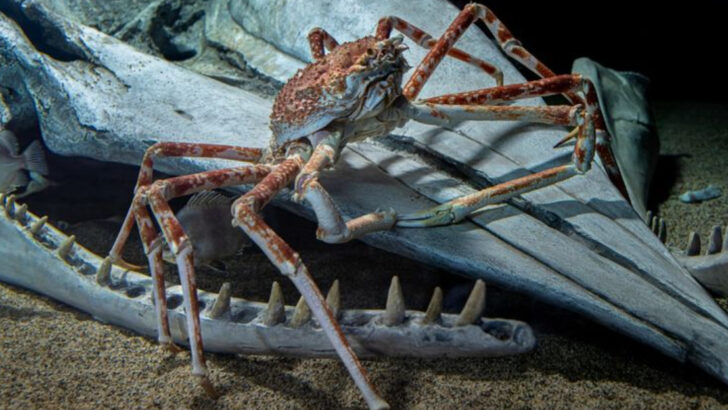It looks like a monster from the deep—and it’s very real.
The giant Japanese spider crab isn’t just large. It’s nightmare fuel with claws. With legs that can stretch longer than a grown man is tall and eyes that seem to judge your every move, this deep-sea creature is the king of creepy crustaceans.
It crawls across the ocean floor like it owns the place—and honestly, it kind of does. It’s ancient, armored, and armed with pincers that could make you rethink dipping your toes in the water.
Some animals surprise you with their beauty.
This one surprises you by still existing.
Ready to meet the sea’s creepiest crawler? Let’s dive into the weird, wild world of the giant Japanese spider crab.
Leg Span Extravaganza
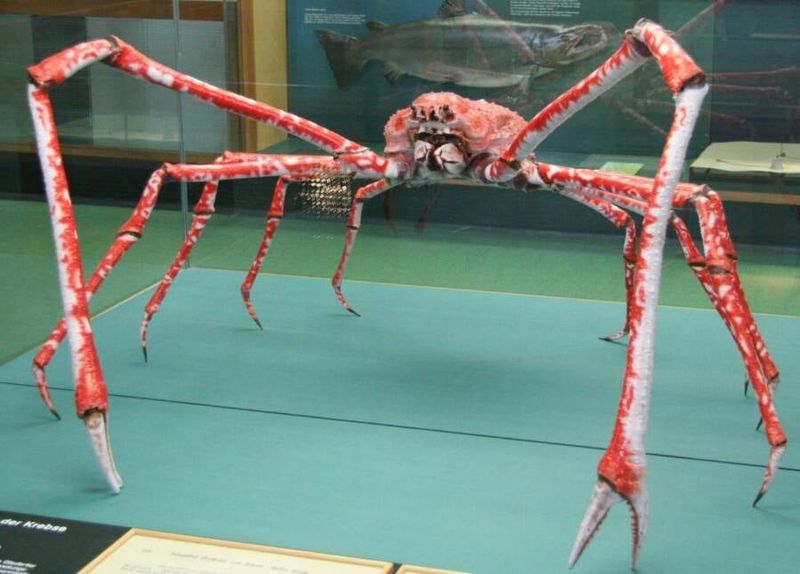
Imagine a creature with legs that could stretch across a small room! The giant Japanese spider crab boasts the longest leg span of any arthropod, reaching up to 12 feet. These massive appendages help the crab scuttle across the ocean floor with surprising agility. Despite their intimidating appearance, these crustaceans are not aggressive towards humans, often retreating when approached. Their size and eerie appearance have earned them a reputation as underwater giants. The sheer span of their legs makes them a marvel in the marine world, leaving observers both in awe and slightly uneasy.
Gentle Giants
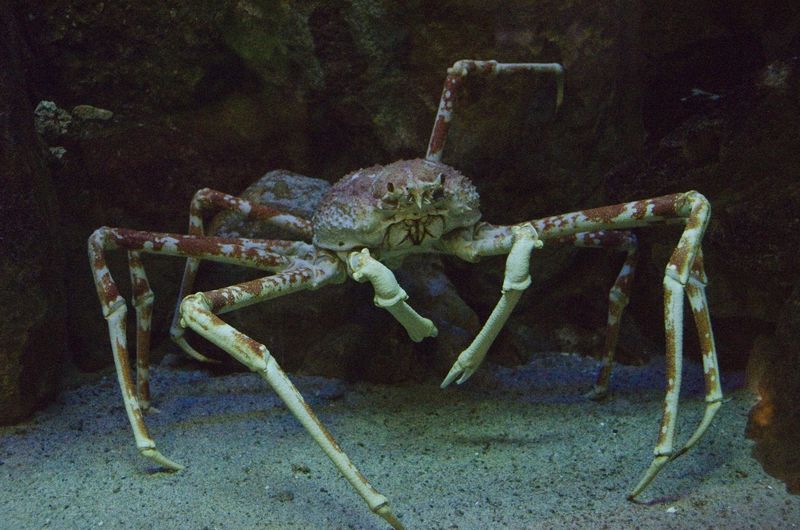
Despite their fearsome looks, these crabs have an unexpectedly gentle nature. Their daily routine involves scavenging the ocean floor for detritus and algae, playing a crucial role in the marine ecosystem. Observing a spider crab delicately handling its food with its claws is a sight to behold, showcasing a surprising grace. Their docile demeanor contributes to their survival, as they rarely engage in aggressive behavior unless provoked. The Japanese spider crab’s peaceful existence amidst the bustling marine life paints a picture of harmony under the sea, dispelling fears rooted in their daunting size.
Ancient Mariners

These crabs seem to carry a piece of history on their shells. With a lifespan that can exceed a century, the giant Japanese spider crab ranks among the oldest living arthropods. Over years, their shells often become home to various marine hitchhikers like barnacles and corals, adding to their ancient mariner appearance. This symbiotic relationship not only provides camouflage but also a glimpse into the deep-sea timelines they traverse. Each crab is a walking testament to the ocean’s history, carrying remnants of past decades across the seabed.
Camouflage Masters

In the stealthy world of the ocean, the Japanese spider crab is a master of disguise. Using the ocean’s natural materials, these crabs adorn themselves with seaweed and rocks, seamlessly blending into their surroundings. This camouflage helps them evade predators and ambush prey with ease. It’s fascinating to watch them artfully arrange their camouflage, showcasing intelligence and adaptability. This natural artistry not only protects them but also exemplifies the meticulous care they take in crafting their underwater persona, making them elusive icons of the deep sea.
Deep Sea Dwellers
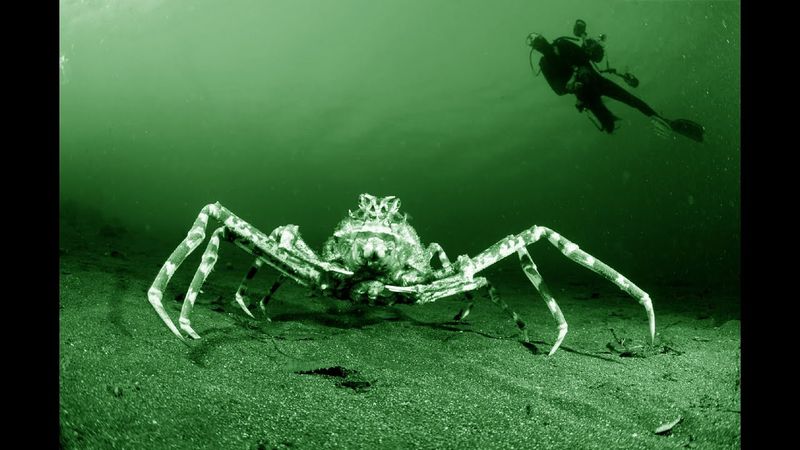
Venturing into the mysterious depths, these crabs thrive in waters over 1,000 feet deep. The giant Japanese spider crab is adapted to life in the deep sea, where light barely penetrates and pressures are immense. Their ability to navigate this harsh environment showcases their resilience and evolutionary success. Observing them amidst bioluminescent creatures creates a surreal spectacle, as if entering an alien world. The depths they inhabit remain largely uncharted, making their existence a tantalizing mystery that continues to intrigue marine biologists worldwide.
Reproductive Wonders
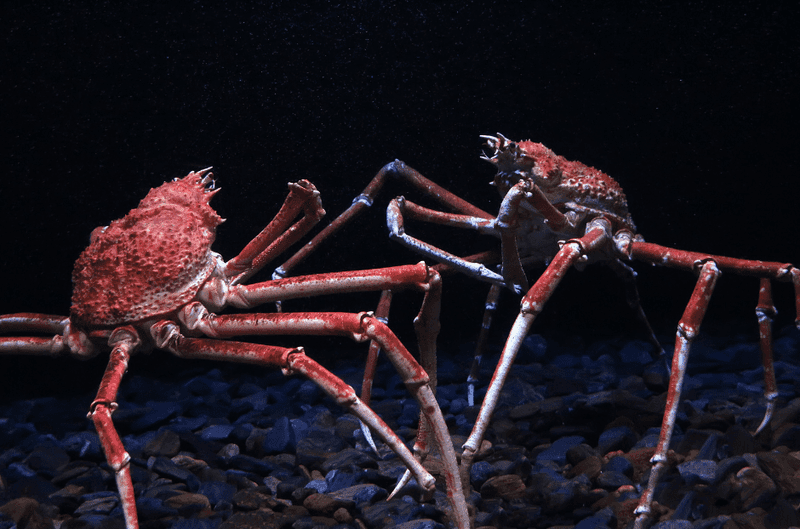
During mating season, these crabs engage in a captivating dance of courtship. The female lays thousands of eggs, which she carries in her abdomen until they hatch. This reproductive strategy ensures the survival of the species despite the numerous challenges they face in the ocean. Watching their courtship rituals offers insights into their complex social behaviors and reproductive strategies. The tender care they provide to their offspring is a stark contrast to their fearsome appearance, highlighting the duality of their nature as both fierce and nurturing creatures.
Crabby Communication

Communication is key, even in the underwater world. Japanese spider crabs use a series of gestures and movements to interact with each other. These interactions can range from establishing territory to signaling readiness to mate. This intricate form of communication reveals a social complexity previously underestimated in these creatures. Observing their gestures is akin to decoding a marine language, offering a window into their social structure and behaviors. Their ability to communicate underwater adds yet another layer to their enigmatic existence, making them fascinating subjects for study.
Dietary Diversity
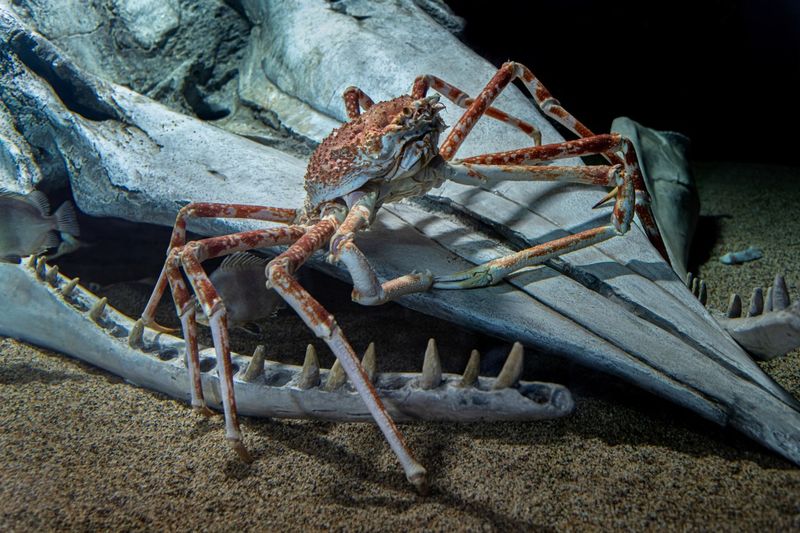
The giant Japanese spider crab is not a picky eater. Their diet includes algae, small fish, and even carrion, showcasing their adaptability in the food chain. This dietary diversity allows them to thrive in various conditions, ensuring their survival in the challenging ocean environment. Witnessing them feed provides insights into their role as both predator and scavenger, essential to maintaining the marine ecosystem’s balance. Their ability to consume a wide range of food sources highlights their resilience and versatility in the ocean’s complex web of life.
Cultural Significance
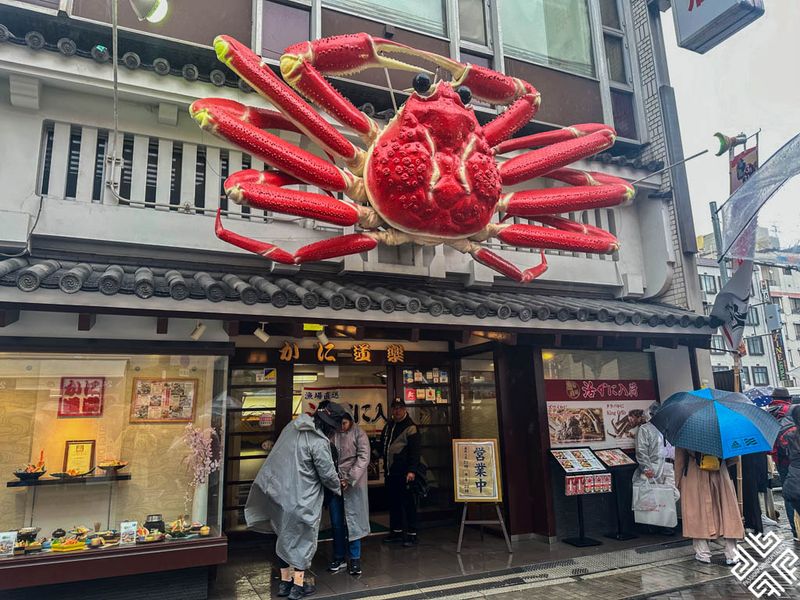
In Japan, these crabs hold a significant place in both cuisine and local folklore. Known as “taka-ashi-gani,” they are sometimes harvested for their meat, considered a delicacy in certain regions. Moreover, their image is woven into cultural stories and art, symbolizing longevity and strength. This cultural importance reflects how these crabs have impacted human history and traditions in Japan. Understanding their role in culture offers a deeper appreciation for their existence beyond the biological, bridging the gap between nature and human society.
Mythological Marvels
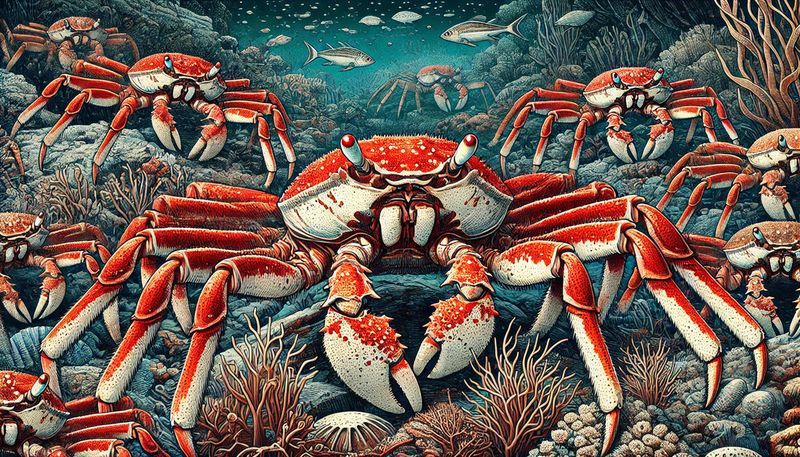
Legends and mythologies often depict these crabs as sea monsters. Their formidable size and eerie appearance have fueled tales of underwater giants prowling the ocean depths. Historically, sailors have spun yarns of encounters with such creatures, blurring the lines between reality and myth. These stories serve as a testament to the crab’s striking impact on human imagination, weaving them into the fabric of seafaring folklore. This mythical aura adds an element of wonder and intrigue to their already fascinating existence, making them legendary in their own right.
Conservation Concerns
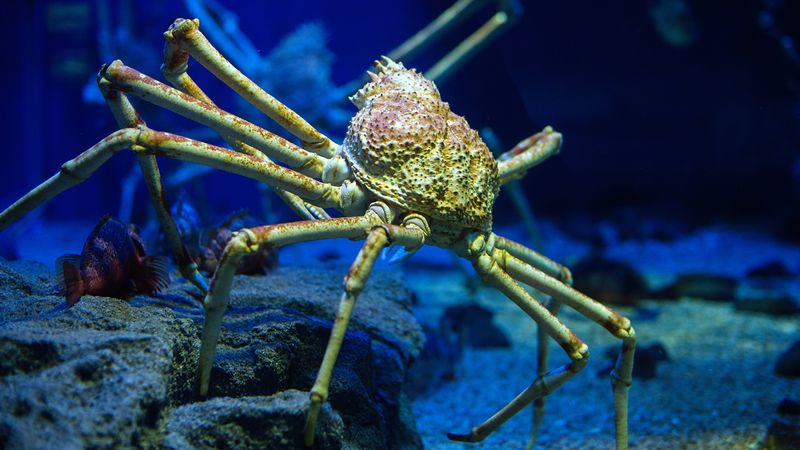
Despite their fearsome reputation, these crabs face threats from overfishing and habitat destruction. Efforts to conserve their populations are crucial, with initiatives focusing on sustainable fishing practices and habitat protection. Observing them in their natural environment highlights their vulnerability and the importance of conservation efforts. Protecting these giants ensures the preservation of marine biodiversity and the continuation of their awe-inspiring presence in the oceans. These initiatives aim to balance human activity with ecological preservation, safeguarding the future of these magnificent creatures.

